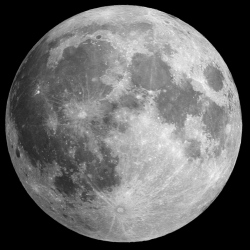
Between 1971 and 1977, Apollo scientists conducting experiments on the Moon discovered that the surface of our satellite buddy got mysteriously warmer. But the data from 1974 onwards went missing, and the strange warming phenomenon remained an enigma.
Now a team of researchers from Texas Tech University has found and restored that data – and discovered that the source of the warming was actually the presence of humans.
The experiment was called the heat flow experiment, and it was designed to determine the rate at which the interior of the Moon loses heat.
Astronauts with Apollo 15 and 17 drilled holes into the lunar surface, up to depths of 2.3 metres, and probes measured the temperature at several depths in the holes.
These were long-term experiments, left in place after the astronauts departed, and transmitting data back to Earth.
At the Apollo 15 site, the surface and subsurface temperatures were monitored from July 1971 to January 1977. At the Apollo 17 site, temperatures were monitored from December 1972 to September 1977.
This data was put on tapes and archived at the US National Space Science Data Centre, but only up until December 1974. Although tapes continued to be made after this point, they never made it to the data centre.
But they continued to be an object of interest, because the data that did get archived showed that the Moon’s surface got warmer at all depths of the holes, starting just after the experiment was initially deployed in 1971.
In 2010, the Texas Tech researchers made an amazing discovery: 440 of the lost tapes, tucked away at the Washington National Records Center. This find, covering the period from April through June 1975, represents less than 10 percent of all the tapes, and many were badly degraded.
So much of the last eight years has been spent using a number of data recovery techniques to try to restore the tapes. And those efforts have paid off – the researchers have now managed to retrieve most of the data.
The remaining tapes are still lost, but at the Lunar and Planetary Institute in Houston, the team found something that made up for some of the shortfall: hundreds of weekly logs that included temperature readings from the probes from 1973 through 1977.
The remainder of the intervening years was spend analysing the data. And showed that the warming continued, all the way through until the end of observations in 1977.
It also showed that, closer to the surface, the warming was more pronounced; and the warmth reached the shallower depths sooner, suggesting that the warmth was occurring from the surface down, rather than radiating out from the Moon’s interior.
So were the astronauts doing that? The researchers believe that their movements were disturbing the dirt on the lunar surface.
"Recently acquired images of the Lunar Reconnaissance Orbiter Camera over the two landing sites show that the regolith on the paths of the astronauts turned darker, lowering the albedo," they wrote in their paper.
"We suggest that, as a result of the astronauts’ activities, solar heat intake by the regolith increased slightly on average, and that resulted in the observed warming."
In other words, when they stomped about and drove lunar rovers all over the landing sites, the Apollo astronauts overturned the topsoil, exposing darker regolith underneath. Darker surfaces don’t reflect as much light; instead, they absorb it.
So this darker lunar surface at the Apollo sites absorbed more of the Sun’s heat, raising the Moon’s surface temperature by a few degrees.
It’s a finding that suggests humans may not be able to go to the Moon without changing it whether they want it or not; it’s also a reminder to always take into account the observer’s effect when performing experiments.
"In the process of installing the instruments you may actually end up disturbing the surface thermal environment of the place where you want to make some measurements," planetary scientist Seiichi Nagihara told GeoSpace.
"That kind of consideration certainly goes in to the designing of the next generation of instruments that will be someday deployed on the Moon."
